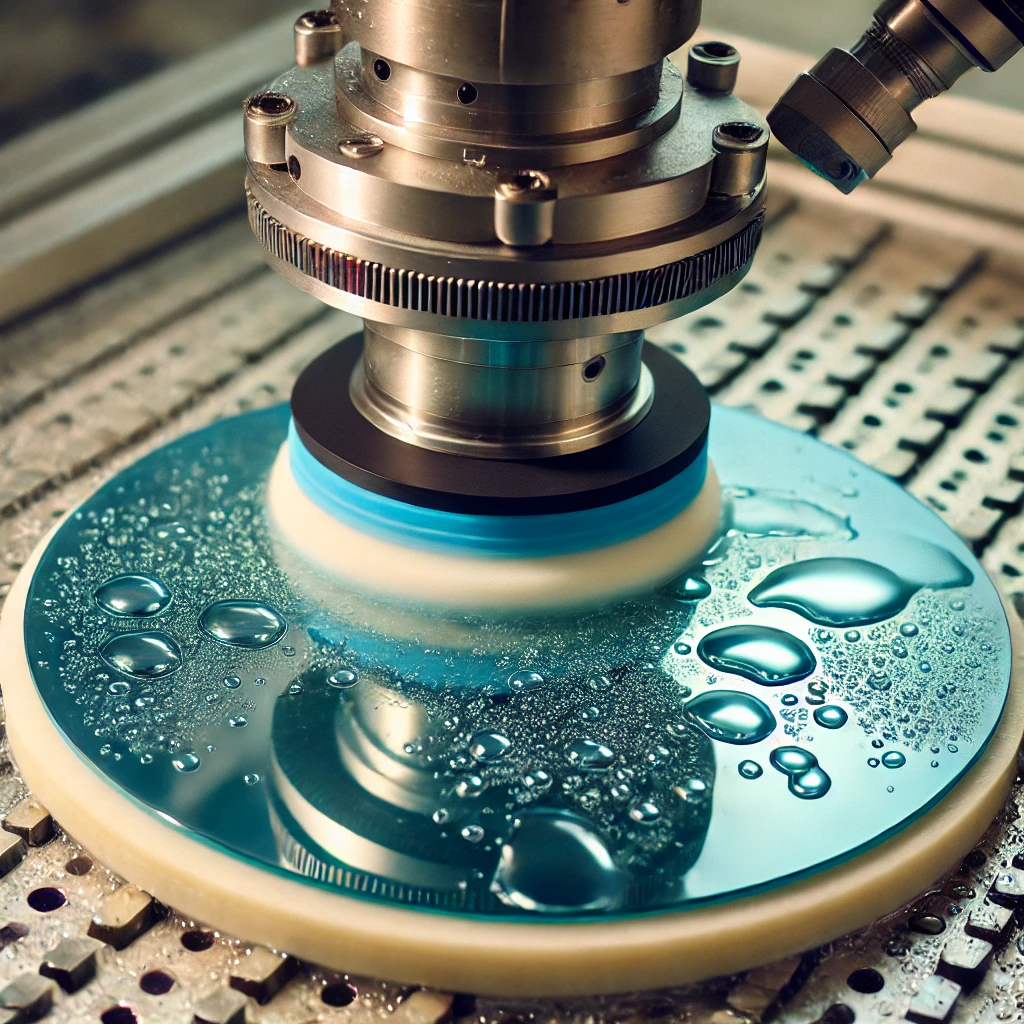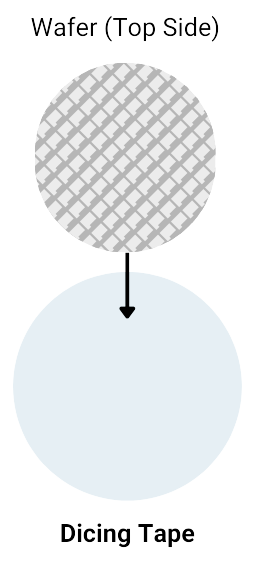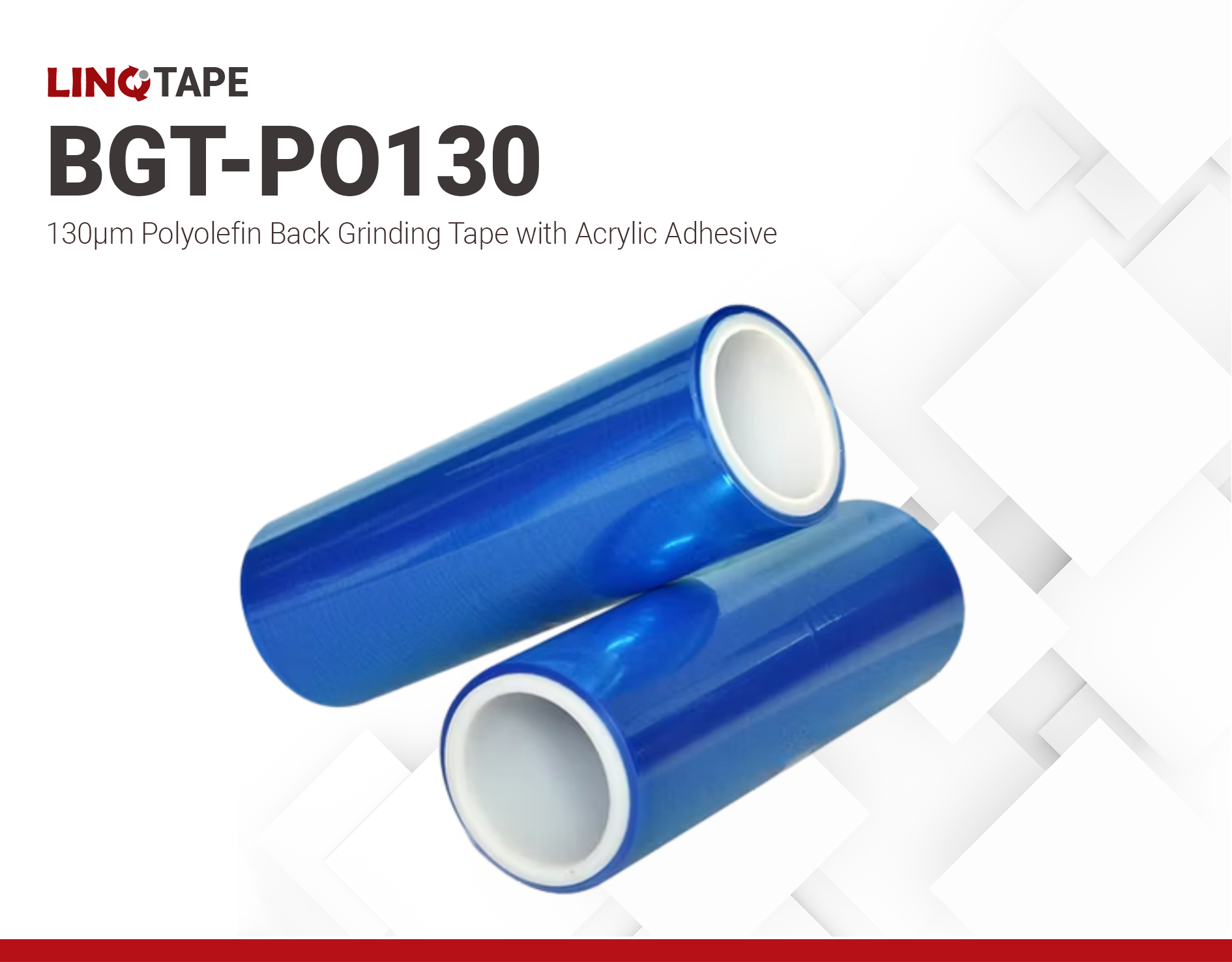Wafer Backgrinding
The backgrinding process is a crucial step in semiconductor manufacturing. It's main goal is to reduce the thickness of wafers after front-end processing. This enables the production of ultra-thin semiconductor dies, which are essential for applications like advanced packaging, flexible electronics, and high-performance computing.

The process begins by mounting the wafer onto a support surface using a specialized backgrinding tape. This tape holds the wafer securely in place while preventing damage. The wafer is then ground down to the desired thickness using an abrasive grinding wheel. There are multiple
Wet Backgrinding
Wet grinding is the most commonly used backgrinding method, where a continuous flow of water is applied to the wafer surface during grinding. This helps to cool the wafer, minimize thermal stress, and reduce debris accumulation. The result is a smoother and more uniform surface. However, proper drying and cleaning are necessary afterward to remove any residual water or particles.
Dry Backgrinding
Dry grinding, as the name suggests, does not use water. Instead, it relies on a vacuum system to remove debris. While this method can be faster and eliminate the need for post-grinding drying, it can introduce more heat and mechanical stress to the wafer, increasing the risk of damage or warping. It is not as common as
One of the most critical components during both wet and dry backgrinding are backgrinding Tapes. Backgrinding tapes are specialized tapes designed for use during the backgrinding process. They are thin, flexible, and have a strong adhesion layer.
The tape's main goals are to:
- Support the wafer - the tape holds the wafer securely, which means it won't move and thus won't be damaged during the grinding process
- Be easily removable - since the tape isn't a part of the final component, it needs to be removed. After the removal of the tape the wafer must remain intact and free of any residue.
- Protect the wafer - the tape adheres to the front side of the wafer and creates a seal to prevent any debris or slurry from entering and damaging the sensitive circuits.
What is the Difference between Backgrinding and Dicing Tapes?
Dicing Tapes are similar to backgrinding tapes but used for a different purpose. They both stick to and support the wafer, but are applied on different parts of the wafer. Dicing tapes are applied to the back of the wafer, since the slicing of the wafer to create dies occurs on the front side. On the other hand, backgrinding occurs on the back side of the wafer, which means the tape needs to be applied to the front.


Backgrinding Tape is placed on the front side of the wafer, to protect the face while the backside is grinding to the desirable thickness
UV Removable vs Non-UV Removable Backgrinding Tapes
UV Removable Backgrinding Tapes are widely used in backgrinding tapes to prevent the adhesion of residue to the wafer. When UV Light is applied, the adhesive becomes less tacky and allows for easy removal. This works because of the adhesive. The adhesive used is sensitive to UV light, and when exposed to it, it chemically alters to lose its bonding strength. One of the most important qualities of this technology is that no residue is left on the substrate. This makes it ideal for wafers.
Non-UV Removable Backgrinding Tapes are removed the traditional way. They are also specifically designed to leave no residue behind, however are more challenging to remove than a UV Removable Tape. They can be used in applications in which a consistent level of adhesion is needed. Non-UV Removable is a more economical option and is ideal for very fragile and thin wafers that require strong adhesion throughout the entire process.
UV Removable Dicing Tapes need to meet these two performance requirements:
STRONG ADHESION STRENGTH BEFORE UV
The dicing tape must have a very high adhesion strength when initially placed on the wafer, to keep it secure during the grinding process.
WEAK ADHESION STRENGTH AFTER UV
After UV is applied, the adhesion strength must be weak to facilitate the easy removal from the wafer.
Questions to ask when Choosing a Backgrinding Tape
✅ What is the adhesion strength required?
✅What is the adhesion strength required when removing the tape?
✅What is the thickness of the wafer?
✅What type of film is required for the process? (PET, Polyolefin, Polymerized Vinyl Chloride)
✅Does the process require UV Removable adhesive?
✅What are the operating conditions?
| Product | Adhesion Strength (Before UV) | Adhesion Strength (After UV)B |
|---|---|---|
| BGT-PO180 | 19,000 | - (non-UV Tape) |
| DCT-PO165 | 18,000 | 80 |
⚡ Applications
▪ Backgrinding process
▪ Packaging substrates
✅ Advantages
✔ Strong adhesion to prevent substrate damage
✔ Quick removal with UV Removable technology
✔ Withstands mechanical stress and pressure variations, ensuring long-term durability
📥 Downloads
⬇
LINQTAPE BACKGRINDING Tapes for Semiconductor Wafers
Since the dicing process is an extremely sensitive application, the tapes require specialized materials. LINQTAPE Polyolefine Backgrinding Tapes are designed specifically to meet these needs, offering excellent mechanical strength and high adhesion without residue.

LINQTAPE™ BGT-PO180 is a translucent polyolefin (PO) tape used in the wafer back grinding process. It is compatible to the BG standard, and is highly accurate. PO tapes have the same strong adhesion as a PET tape but are more easily removed from the substrate. This makes it ideal for applications where easy removal without any residue left behind is required. BGT-PO180 is has a low-viscosity adhesive, and is resistant to warpage.
LINQTAPE™ BGT-PO180 can be peeled by using UV. To ensure a clean substrate after removing the tape, BGT-PO180 utilizes a technology through which after applying UV light, the adhesive (18,000 N/25mm) becomes less tacky (80 N/25mm), which facilitates the removal of the tape.

LINQTAPE™ BGT-PO130 is a blue translucent polyolefin (PO) tape used in the wafer back grinding process. It is compatible to the BG standard, and is highly accurate. This makes it ideal for applications where easy removal without any residue left behind is required. BGT-PO130 is has a low-viscosity adhesive, and is resistant to warpage.


